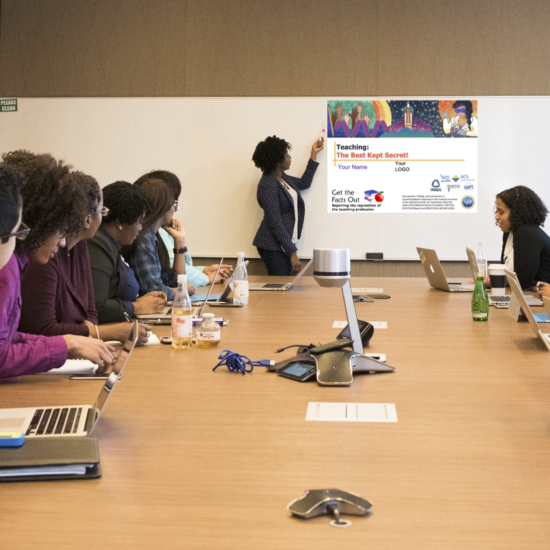How people are sharing the messages of Get the Facts Out
News flash: Y’all are doing amazing things with Get the Facts Out materials! As the friendly local GFO evaluator, I recently reviewed the activities that Champions have been conducting. There were so many rich and useful ideas in there, we decided I should write up a blog post to cross-pollinate these great ideas. Note, if you’re using GFO materials in any way, you are a GFO Champion! You can register as a champion, and also log your activities so we can tell funders why they should support us.
There are currently 202 GFO Champions, representing 157 institutions. While only half of Champions appear to be active (i.e., they have reported an activity), they have logged over 600 activities since the start of the project. The most common activities have been used over 150 times:
- Researching local data on teaching careers
- Having one-on-one conversations about teaching
- Conducting presentations for students
Champions are sharing GFO messages in a variety of venues. Do you get any ideas for your work from these examples?
1. Champions are giving presentations to STEM classes.
This is the most common place that Champions are sharing information with students. Some examples include:
- Introductory STEM course (e.g., physics, chemistry, mathematics)
- STEM seminar course (e.g., chemistry career seminar)
- Honors STEM course
- Non-majors course (e.g., the Physics of Music)
For more ideas on how to connect students with GFO resources, see “Reaching students.”
GFO staff at the Colorado School of Mines had fantastic success last year enticing students in a General Chemistry course (required for all STEM majors) to attend a presentation “on STEM careers” (really it was GFO’s “Busting Myths about the Teaching Profession” presentation). The course instructors agreed to offer the students extra credit, and the presenters offered pizza. About 500 students (all STEM majors) attended!
To find local data to include in such presentations, see the Teacher Salary Data resource.
Post-presentation survey results consistently show impressive gains in knowledge and attitudes towards teaching careers. To give a student presentation, see the Busting Myths presentations page. You should also check out another piece I wrote called “How to use GFO presentations effectively.” A one-slide option is also good as a conversation starter. If you haven’t attended a GFO presentation yourself, however, we suggest first watching the exemplar.
2. Champions are sharing the message about GFO with faculty colleagues in professional settings.
A few Champions are using GFO’s official faculty presentation (“Teaching: The Best Kept Secret!”), but even more are sharing GFO messaging and materials in more informal ways. These collegial sharing opportunities include:
- Group meetings (e.g., education research group, disciplinary weekly seminar or school meeting, STEM faculty lunch)
- Professional settings or conferences (e.g., American Association of Physics Teachers section meeting, Noyce Program Meet and Greet, Noyce Summit, NSF Master Teacher Fellowship presentation)
- Distributing GFO flyers to other colleagues in mathematics, physics, or chemistry
- Sharing the GFO brochure with admissions staff and/or advisors
- Sending GFO materials to faculty and deans
One GFO Change Agent recently commented that adding a single GFO slide to a conference presentation (on another topic) can be effective.
One Champion commented that a STEM faculty lunch was not well-attended, and was curious about ideas to entice faculty to events about teaching. If you have ideas to share, please write to us at getthefactsout@mines.edu!
3. Champions are having one-on-one conversations with students about teaching.
The best outcome of a presentation or short informational slide is that students come to talk to you about teaching careers. These one-on-one conversations are critical in helping students consider this career path. See the Taking the Next Step resource for tips on holding this conversation.
Please continue to share your great ideas about using GFO. Are there any ideas from this post that you might be able to use? You can always write to us at getthefactsout@mines.edu.



